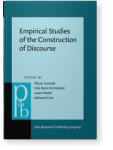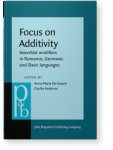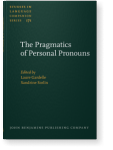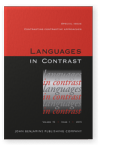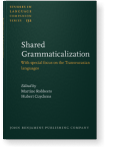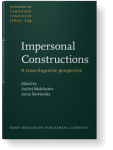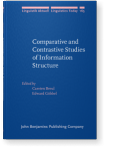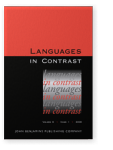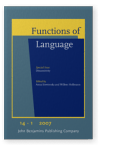Volker Gast
List of John Benjamins publications for which Volker Gast plays a role.
2022 Chapter 5. The German modal particle ja and selected English lexical correlates in the Europarl corpus: As you know, after all, of course, in fact and indeed Particles in German, English, and Beyond, Gergel, Remus, Ingo Reich and Augustin Speyer (eds.), pp. 117–146 | Chapter
This study deals with lexical correlates of the German modal particle ja in English, using data from the Europarl corpus for illustration. The central question addressed is whether, or to what extent, English has expressions that are functionally equivalent to ja. A graph-based model for the… read more
2019 Chapter 6. A corpus-based comparative study of concessive connectives in English, German and Spanish: The distribution of although, obwohl and aunque in the Europarl corpus Empirical Studies of the Construction of Discourse, Loureda, Óscar, Inés Recio Fernández, Laura Nadal and Adriana Cruz (eds.), pp. 151–192 | Chapter
This contribution presents a comparative, corpus-based study of the arguably most common concessive connectives of English, German and Spanish, i.e., although, obwohl and aunque. Concessive connectives cover a broad range of contexts and the question arises to what extent prima facie equivalents… read more
2017 Chapter 7. The scalar operator even and its German equivalents: Pragmatic and syntactic factors determining the use of auch, selbst and sogar in the Europarl corpus Focus on Additivity: Adverbial modifiers in Romance, Germanic and Slavic languages, De Cesare, Anna-Maria and Cecilia Andorno (eds.), pp. 201–235 | Chapter
The English scalar additive operator even has a broad distribution, e.g. insofar as it is used in upward- as well as downward-entailing contexts. Other languages, such as German, use a variety of expressions to render the function(s) of even. The question arises what conditions and determines the… read more
2015 Chapter 15. Impersonal uses of the second person singular and generalized empathy: An exploratory corpus study of English, German and Russian The Pragmatics of Personal Pronouns, Gardelle, Laure and Sandrine Sorlin (eds.), pp. 311–334 | Article
Second person forms of pronouns (e.g. Engl. you, Germ. du) or verbs (e.g. Russian pišeš ‘you write’) have a basically deictic function and refer to the addressee. In uses that have been called “impersonal” or “non-canonical”, the second person forms are used in a generalizing way (e.g. You only… read more
2015 On the use of translation corpora in contrastive linguistics: A case study of impersonalization in English and German Contrasting contrastive approaches, Defrancq, Bart (ed.), pp. 4–33 | Article
This article argues for a type of corpus-based contrastive research that is item-specific, predictive and hypothesis-driven. It reports on a programmatic study of the ways in which impersonalization is expressed in English and German. Impersonalization is taken to be epitomized by human impersonal… read more
2013 Chapter 6. Scalar additive operators in Transeurasian languages: A comparison with Europe Shared Grammaticalization: With special focus on the Transeurasian languages, Robbeets, Martine and Hubert Cuyckens (eds.), pp. 113–146 | Chapter
This article provides a survey of scalar additive operators such as Turkish bile, Japanese sae, Korean cocha ‘even’, etc. and related expressions in a sample of thirteen Transeurasian languages. The data is presented and interpreted against the background of evidence from European languages and… read more
2011 On the distribution of subject properties in formulaic presentationals of Germanic and Romance: A diachronic-typological approach Impersonal Constructions: A cross-linguistic perspective, Malchukov, Andrej L. and Anna Siewierska (eds.), pp. 127–166 | Article
The present study deals with the distribution of subject properties in ‘formulaic’ presentational constructions such as Engl. there is NP, Fr. il y’a NP and Span. hay NP, approaching the problem from a diachronic-typological perspective. Nine major types of presentational constructions are… read more
2010 Contrastive topics and distributed foci as instances of sub-informativity: A comparison of English and German Comparative and Contrastive Studies of Information Structure, Breul, Carsten and Edward Göbbel (eds.), pp. 15–50 | Article
This programmatic study offers a comparison of the lexical, syntactic and prosodic devices used in English and German to encode the information structural category of ‘sub-informativity’, which subsumes occurrences of contrastive topics and of distributed (multiple) foci. Sentences are called… read more
2007 I gave it him — on the motivation of the ‘alternative double object construction’ in varieties of British English Ditransitivity, Siewierska, Anna and Willem B. Hollmann (eds.), pp. 31–56 | Article
Three ditransitive constructions can be found in varieties of British English: (i) the ‘prepositional object construction’, where the recipient is encoded as a prepositional phrase (gave it to him); (ii) the ‘canonical double object construction’, where the recipient precedes the theme (gave him… read more

